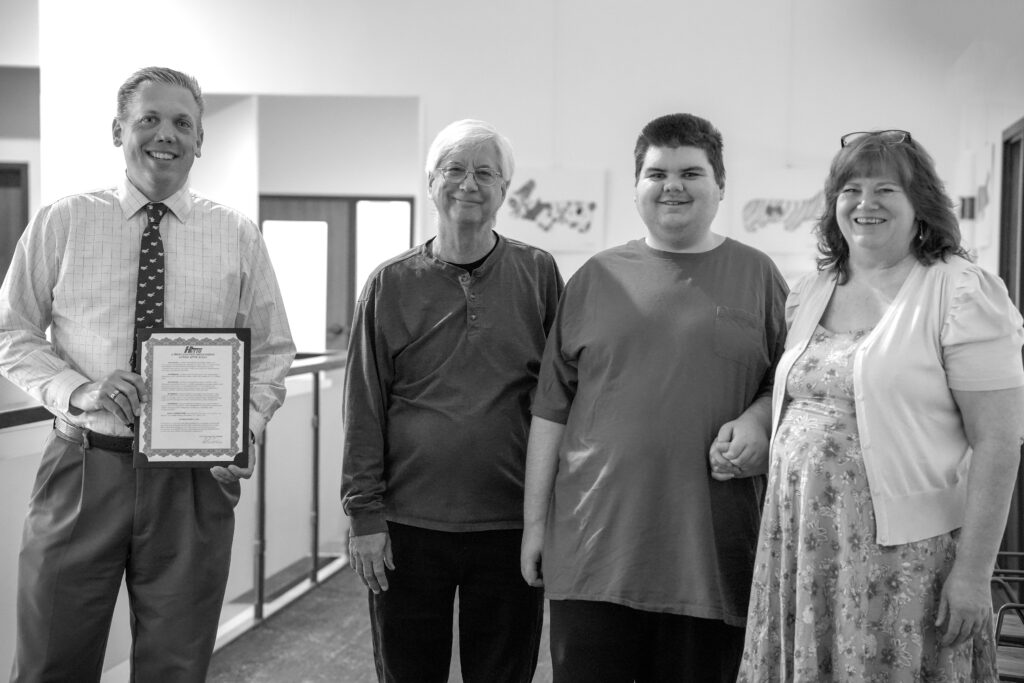Where to Start: Neuro-Inclusion in the Workplace With growing access to diagnosis toolkits for diverse populations and increased social awareness of autism through hashtags like #ActuallyAutistic on social media sites, more communities are becoming aware of the need for...
Where to Start: Neuro-Inclusion in the Workplace
 Photo by fauxels
Photo by fauxels
With growing access to diagnosis toolkits for diverse populations and increased social awareness of autism through hashtags like #ActuallyAutistic on social media sites, more communities are becoming aware of the need for neuro-inclusion. Creating neuro-inclusive communities can begin in many places, but a common question that many come across when trying to become better allies is: �How do I begin to make changes in the workplace to support neuro-inclusion?� It can seem intimidating to try and address such a complex topic, especially if you aren�t autistic or don�t have experience with practices of neuro-inclusion. Here are a few compiled tips and pointers to keep in mind while creating a neuro-inclusive workplace.
Using Correct Terms
Terms such as neurodivergent and neuro-inclusion can be confusing to those unfamiliar with them. Here�s a brief guide.�
Neurodivergent refers to people who have brains that process and react to information in a way that �diverges�, or is different, from what is considered �normal� by society. This term includes people with diagnoses like autism, ADHD, giftedness, and other sensory processing disorders or disabilities. Being neurodivergent is not a weakness�it is just a different way of being that should be respected nonetheless.
Neurotypical refers to people whose brains work in a way that society frames as the �default�. While this way of thinking about certain groups of people as the default can seem very common, it is best to view it as one way of thinking among many. The default expectations that come along with this way of thinking often include ways that we expect people to talk to us, their routines, interests, or even behaviors. Being neurotypical is a bit like wearing a pair of glasses. You might not always be thinking about it, but that doesn�t mean that the lenses aren�t there or that they don�t have an effect on the way we move through the world.�
Neurodiversity describes how every person�s brain is wired in a way unique to them. Just like no two people�s fingerprints are the same, so are the ways their brains help them think, talk, and interact with the world around them.�
Neuro-inclusion is the practice of making spaces, events, and everyday living accommodating for neurodivergent individuals. Society often structures the world to cater to neurotypical brains, which can leave neurodivergent individuals forced to the margins. When we imagine a neuro-inclusive society, that means that neurodivergent individuals can make their own choices. They can choose how to live and enjoy their lives in a way that is fulfilling to them. This vision also includes support from and collaboration with neurotypical individuals when needed.
Building a Supportive Environment
Avoid Extremes (Exceptionalism and Isolation)
Despite the fact that autism representation in media has changed for the better, a common issue that arises from these efforts is exceptionalism. Exceptionalism happens when society places neurodivergent individuals on a pedestal that erases them of their full humanity. An example of this is the stereotype of the autistic �savant�. While many neurodivergent people are talented at certain jobs or tasks, they also face challenges. Idealizing neurodivergent people as savants often erases the whole and complex nature of their identities. There is also the flip side of isolating neurodivergent populations in the workplace. This isolation often happens unintentionally through workplace practices that people consider �common� or �the way things have always been�.
When in Doubt, Consult and Seek Feedback
There are many free or easily available resources online for businesses or other workplaces that are interested in taking steps towards a more neuro-inclusive workplace. The Chartered Institute of Personnel and Development, in collaboration with Uptimize, a global leader in neuro-inclusion, released a guide in 2018 called Neurodiversity at Work. The guide contains information on different ways workplaces can adjust their practices to support neuro-inclusion. This guide also includes several examples discussing neuro-inclusion efforts made by prominent businesses with feedback about the journey. Another best practice for neuro-inclusion is seeking feedback straight from self-advocates. These practices can look different for every business or workplace.�
Modifying Existing Practices
Eye Contact
A common workplace expectation is that making eye contact is the way to behave professionally. People often see lack of eye contact as disrespectful or unprofessional. However, a common example of neurodivergent behavior is difficulty making or maintaining eye contact. This is an example of how neurotypical expectations can become barriers to neuro-inclusion. When eye contact is the focus of professional behavior, things like what a person is saying can seem less important. Therefore, it is important to reconsider what is important about workplace communication, and what acts as a barrier to neuro-inclusion.
Interview Questions
Another practice that workplaces can change to support neuro-inclusion is the process of interviews. It is common for an employer to ask unrehearsed questions, to test an interviewee�s ability to think quickly. However, this practice can also lead to unnecessary stress that leads to weaker responses overall. Testing someone�s ability to think spontaneously is important in some cases, but most of the time it is not as important as the content. Consider shifting focus to how well a potential employee can prepare and present a well-thought-out response if given the opportunity to prepare in advance.
Working with Intention
Bringing neuro-inclusion into the workplace requires active, ongoing effort. There are smaller steps that leaders can implement into the workplace without drastic changes, such as in the examples above. However, neuro-inclusion is a marathon, not a sprint. Maybe a change that an organization projected to have a positive reception needs a bit of adjusting after going through employee feedback. Or perhaps an open-table conversation has a few bumps in an otherwise productive talk that leaders might need to address in hindsight. Even increasing the number of neurodiverse people in the workplace is a decision that requires follow through. It is best to make sure that employees feel supported in a changing work environment.
The Journey to Action
Considering the broad scope of neuro-inclusion discussed above, it may seem complicated to begin making changes in the workplace. However, neuro-inclusion is not something that happens through a single effort, or even after a few times. Supporting neuro-inclusion is a continuous journey taken one step at a time.
As a starting point, try doing a bit of online research through sites like Auticon, the Job Accommodation Network�s page on the autism spectrum, this article from the NeuroLeadership Institute that compiles anecdotes and advice from neurodiversity advocates, or Madison House�s own page of vetted resources and toolkits we created with partners and self-advocates. Choose one small area to make a dedicated change, whether it is hiring practices, company culture, reconsidering communication, or another idea entirely. Make time to find and listen to feedback after major changes, and, as always, remember that the best efforts at creating neuro-inclusive environments are always growing and changing.
This quote from Khushboo Chabria, the Diversity & Inclusion Program Manager at Neurodiversity Pathways, sums up the intention and challenges of neuro-inclusion:
�We [want to] make sure that you don�t create a culture where anyone feels othered. They�re integrated into the organization�s community. They�re involved in different things that are going on within the organization. They have the support that they need. They feel they can bring new ideas, they can speak up, they can share, and they can disclose their diagnosis. I mean, that�s just top level.�
The post Where to Start: Neuro-Inclusion in the Workplace appeared first on Madison House Autism Foundation.











